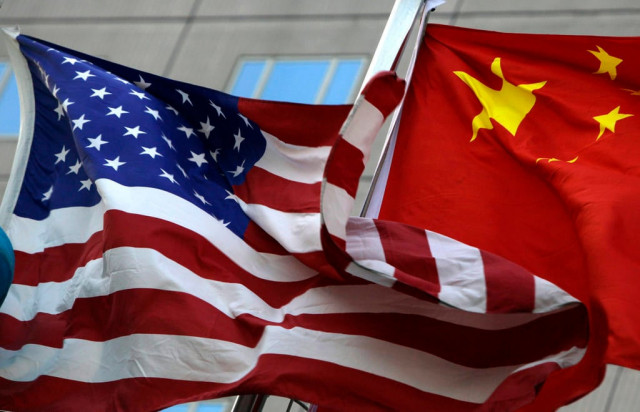Why diplomacy of tariffs may backfire?
Commercial weapons deployed by US, China involve different tactics

After several rounds of US-China trade fights in the past two years, the World Trade Organisation (WTO) finally ruled on September 15 that Section 301 US tariffs imposed on $360 billion of Chinese goods in 2018 were excessive and unjustified.
The WTO panel disregarded the US case for tariffs on grounds of forced technology transfer and cyber theft as WTO rules provide no remedy or any course of action for such trade practices.
Though Washington could technically appeal against the verdict, it is uncalled for as the US itself has been blocking the nomination of new judges to the WTO’s appellate body for months, rendering the organisation’s Dispute Settlement System (DSS) almost defunct.
What further makes this ruling insignificant is the fact that China too has been slapping retaliatory tariffs on American products all this time.
However, what we see is that both the US and China are using tariffs and trade wars as a punitive weapon to influence policy decisions by the EU and other small states.
The US imposed tariffs on French jam processors after Paris started pursuit of a digital services tax that could negatively impact big US tech companies.
Similarly, Beijing cancelled meat imports from Germany and Australia this year to stop them from joining the US campaign of isolating Beijing over its mishandling of the pandemic and the Hong Kong situation.
Such weapons of “commercial diplomacy”, as deployed by both economic powers, however, involve very different tactics.
The US needs legitimacy to force tariffs on the EU and this is where the $7.5 billion arbitration award by the WTO in the Airbus case comes into play.
In 2019, the WTO itself authorised the US to impose tariffs on European products but the EU was not allowed to retaliate against such measures.
Moreover, the Trump administration employed a carousel trade provision, which involves a regular rotation of goods targeted for tariffs, designed to fuel trade uncertainties and policy confusions.
Recently, the US lifted tariffs on British biscuits after talks proceeded to finalise a favourable bilateral deal but imposed more tariffs on France and Germany to send them a reminder about their policies.
China, however, doesn’t need to impose tariffs in a similar fashion as the bulk of Chinese imports (with the exception of automobiles and smartphones) are executed by state-owned companies.
So, all it needs is one bureaucratic excuse or another to block particular imports. None of that will raise a red flag with the WTO too.
For example, Australian beef suppliers had labelling and certification problems after Australia demanded to hold China accountable for Covid-19.
Similarly, as diplomatic rift deepened with Canada over the Huawei episode, Beijing had to block imports of canola and meat due to some certification problems. The message, however, was loud and clear.
The US-China bilateral trade, however, remains a complicated affair and imposing tariffs could be self-defeating for both countries in the post-pandemic economy.
Imposing tariffs on Chinese imports can indirectly hurt US businesses too as those US products that are manufactured in China are treated as imports in the US trade data and are also accounted for in the US-China trade deficit.
For example, in the US trade data, the import of iPhones from China is recorded at almost full product value – despite that Apple is an American company and the relative value addition that occurs in China is small.
The major cause for concern in the US-China trade war is a widening gap between consumption and production for both countries.
Chinese demand for US imports remains depressed in the post-pandemic world. We see that during Covid, Beijing provided financial support to manufacturers for continuing production while governments in Europe and the US intervened through direct cash transfers to households.
It is basically the demand generated by the EU and the US that has kept factories running in China.
Chinese production continues to outpace consumption while the American consumption is exceeding production but now the recovery is slowing down.
This stimulus-driven demand is now stalling and sooner or later, the Chinese industrial worker will take a hit, especially if we have another round of US-China trade war.
This trajectory is sustainable only if we put a stop to using trade tariffs as a political weapon and develop consensus on reforming WTO in true letter and spirit.
If left unchecked, the trade dispute can easily spill over to fuel a transatlantic trade war, especially if the EU decides to push retaliatory tariffs against China and the US.
THE WRITER IS A CAMBRIDGE GRADUATE AND IS WORKING AS A STRATEGY CONSULTANT
Published in The Express Tribune, Septe0mber 28th, 2020.
Like Business on Facebook, follow @TribuneBiz on Twitter to stay informed and join in the conversation.



















COMMENTS
Comments are moderated and generally will be posted if they are on-topic and not abusive.
For more information, please see our Comments FAQ